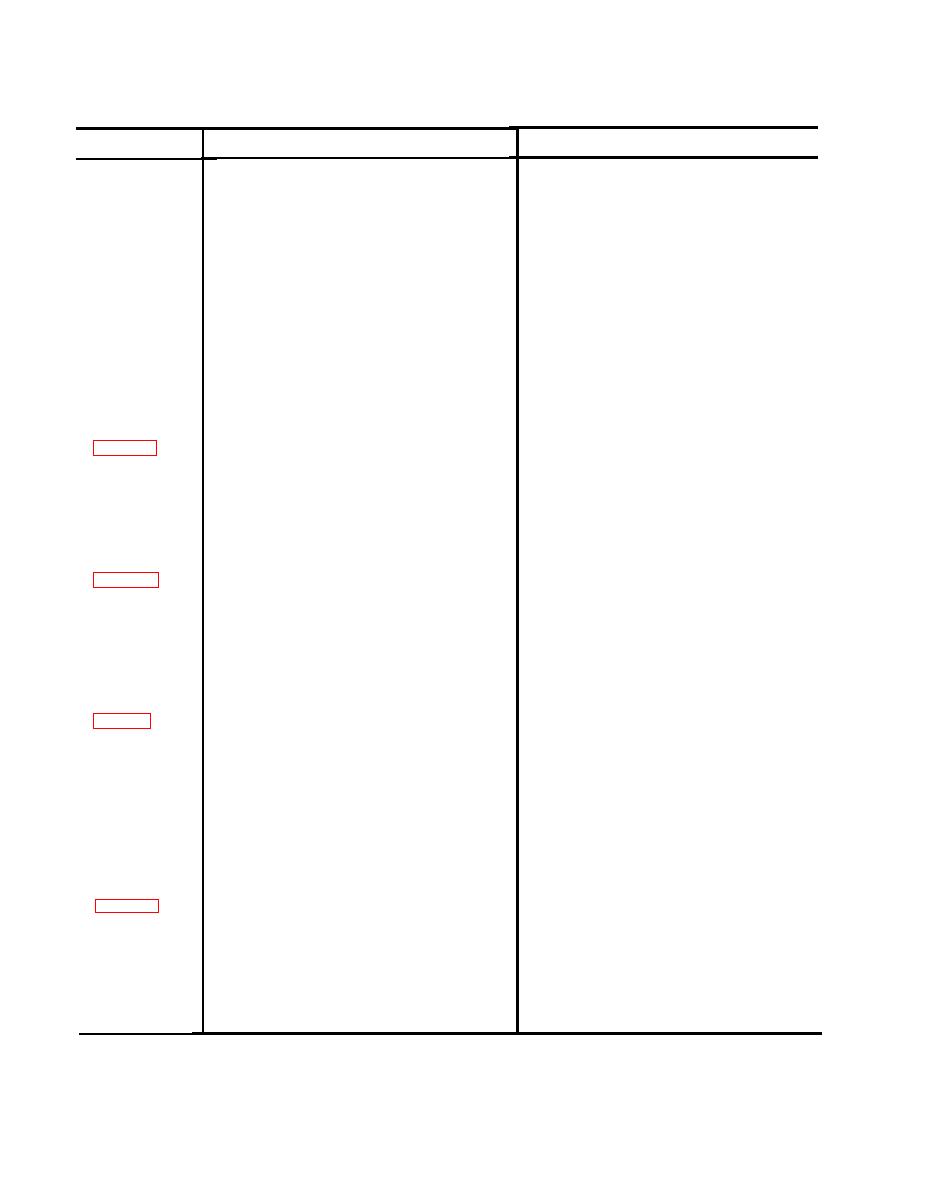
TM55-1500-345-23
Table 3-1. Manual Spray Coating Troubles. Possible Causes, and Remedies (Continued)
PREVENTIVE MEASURES OR REMEDIES
POSSIBLE CAUSES
TROUBLE
Employ initial wipedown. using safety solvent
Insufficient drying time on wash primer and/or
Failure of wet tape
followed by thinner as an auxiliary cleaner. Rinse
epoxy primer: Insufficiently cleaned surface:
test
with clear clean water when enzymatic cleaner iS
cleaning compound residue. etc. Oil seepage
used: remove all shop primers to provide a clean
throughout inspection doors and blind rivets
surface prior to any coating: primer shop coat
(especially jet aircraft) entrapped oils and soil in
elirnination preferred as 011 removal from shop
epoxy shop primer: excessively aged primer:
primer coats practically Impossible. employ sol
insufficient removal of shop primer and/or pre-
vent-dampened cloths in Iieu of dry cloths for
removal of oil contamination. Allow aircraft to
ing wax ingredients: use of laundered rags
stand for a sufficient time to permit drainage of
instead of new mill ends: use of water-sensitive
effluent before final cleaning note the type of fail-
primer not conforming to specification
ure. such as to bare metal or intercoat failure. and
requirements: seepage of water containing
select the applicable cause and remedy accord-
cleaning compound residues from between fray-
ingly.
ing surfaces.
Allow coal to dry before recoating. (Applica-
1.
1.
Absorption of solvents by previous partially
Lifting
ble only to single component paint.)
dried film.
2.
Begin with properly prepared surface
2.
Second coats apt 10 lift if poorly prepared
surface.
Use compatible coatings and thinners
3.
1.
Drain Iines periodically.
Rust under surface.
1.
Pitting or cupping
2.
Use proper thinner proportions.
2.
Oil or grease on surface.
Strip and clean: or sand down and repaint
3.
Moisture in lines.
3.
Trapped solvents.
4.
Do not mix materials and/or compo-
NOTE
nents of different manufacturers.
1.
Use least amount of air pressure necessary
Too high air pressure.
1.
Excessive spray fog
Release trigger when gun passes target.
2.
2.
Spraying past surface of the product.
Ascertain and use correct setup
3.
Wrong air cap or fluid tip.
3.
4.
Stroke the gun 6 to 10 inches from surface
4.
Gun stroked too far from the surface.
Add the correct amount of solvent by meas-
5.
Material thinned too much.
5.
sure or test.
1.
Laboratory analysis to verify acceptability of
1.
Unsatisfactory wash primer or primer.
Sandpaper finish
the material: check wash primer and primer
application procedures.
Provide cleaner painting areas.
2.
2.
Excessive dirt contamination from painting
area.
Scuff-sand wash primer using No 320 and
3.
Insufficient scuff-sanding of wash primer or
3.
wet-or-dry abrasive. paper P-C-451.
primer.
Flush paint lines frequently with solvent.
4.
4.
Improperly cleaned paint lines.
3-22


